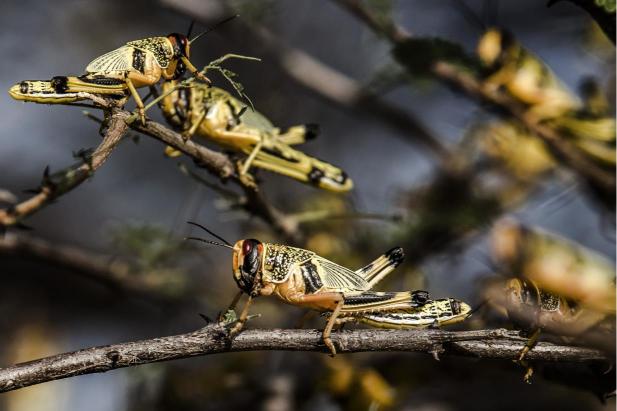 Fight against desert locusts/FAO.
Fight against desert locusts/FAO. Kenya and its Horn of Africa neighbours are intensifying
efforts to build stronger surveillance and early warning systems against desert
locusts, to protect millions of farmers and pastoralists whose livelihoods
remain vulnerable to the invasive pest.
The move comes nearly five years after the 2020–21 desert locust upsurge, the worst in 70 years, which destroyed crops and pasture across the region and left over 20 million people food insecure, according to the Food and Agriculture Organization.
Countries in the Horn of Africa are stepping up efforts to strengthen surveillance and early warning systems for desert locust management to safeguard food security and protect livelihoods across the region.
Agriculture PS Kiprono Ronoh said Kenya and its neighbours are keen to invest in preventive and environmentally sound measures through stronger regional coordination, improved surveillance and harmonised early warning systems.
“Desert locust plagues are best managed before they become crises. Strengthening cross-border data sharing, forecasting tools and building local capacity will allow us to act early and minimise losses to farmers and pastoralists. This is about food security, resilience and protecting the most vulnerable households in the Horn of Africa,” he said.
The push follows repeated locust invasions that devastated crops and rangelands. FAO data shows that the 2020–21 desert locust upsurge was the worst to hit East Africa in decades.
At its peak, swarms spread across 10 countries, including Kenya, Ethiopia and Somalia, destroying crops and threatening the livelihoods of more than 35 million people.
FAO and partners mobilised over $230 million for emergency control, averting an estimated $1.8 billion in crop and livestock losses.
FAO explains that during quiet periods (known as recessions) desert locusts are usually restricted to the semi-arid and arid deserts of Africa, the Near East and South-West Asia that receive less than 200 mm of rain annually.
This area covers about 16 million square kilometres across nearly 30 countries. However, favourable rains and cyclonic events linked to climate variability create conditions for the pests to multiply rapidly and spread across borders.
According to the Ministry of Agriculture and Livestock Development, desert locusts (Schistocerca gregaria) remain the most destructive migratory pest in Africa, capable of consuming the same amount of food in one day as 35,000 people. Emergency control often costs millions of dollars and relies on aerial spraying of pesticides, which can have negative environmental impacts.
Ronoh said agriculture remains the backbone of Kenya’s economy, contributing nearly 25 per cent of GDP and employing 70 per cent of the rural population.
“Protecting agriculture from threats such as desert locust invasions is not optional, it is critical to national and regional stability,” he added.
The renewed collaboration was highlighted during a two-day Regional Coordination Workshop on Strengthening Surveillance and Early Warning Systems for Desert Locusts Management in the Horn of Africa.
The meeting brought together delegations from Djibouti, Ethiopia, Kenya, Somalia, and South Sudan, alongside IGAD, the Desert Locust Control Organization for Eastern Africa and the World Bank.
The workshop was supported by the World Bank through its Emergency Locust Response Program and the Horn of Africa Umbrella Trust Fund, which is financing capacity building, regional coordination meetings and the adoption of modern data collection platforms such as the eLocust3 mobile app.
The workshop featured technical sessions, knowledge-sharing, and consensus-building to generate actionable recommendations for enhancing regional preparedness against future invasions.
















